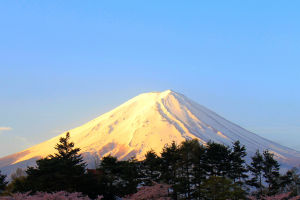Shirakawa Village is located at the foot of Mount Baishan, and this village is located in the so-called "heavy snow area". In addition to the heavy snow and powder snow that children in the south can hardly see, the biggest feature of Baichuan Township is his gassho house.
In order not to be crushed by the snow, it is built entirely of wood, covered with thick thatch, and the roof is built at a steep angle, like palms. Hence the name: Hezhang Village.
There are 5 ancient villages in Shirakawa Township, 114 "gassho-made" historical buildings, and a relocated ancient building area, which can be said to be a museum of Japanese folk houses. In 1935, German architect Bruno Todd first discovered the "Gassho-zukuri" village. In his book, "Gassho-zukuri" was praised as "extremely reasonable" and "a rare traditional common people's building in Japan". Since then, it has become famous.
Gassho-zukuri is a carrier of traditional lifestyles. The first floor is a traditional Japanese-style living room, kitchen, and bathroom; the second floor is generally used as a storage room and a textile studio.
For the visual experience of tourists, Baichuan Township has gone to great lengths. There is a Zhuangchuan River outside Baichuan Township. The small bridge on the river is the main entrance to the village. Tourists can only enter the village by walking through the lock bridge and through the dense forest. After entering the village, the sight suddenly opens up.
In addition, there are some special festivals and buildings here.
1. Myozenji Temple
It is a rare Gassho-style temple, where the annual Zhuojiu Festival is held. The Zhuojiu Festival includes congratulatory speeches, musical instrument performances, masked singing and dancing, makeup parades, and other links, and has become a major tourist item.
2. Rice transplanting festival
There are 1,650 mu of rice fields in Baichuan Township. The traditional hand-planting festival is held every May when rice is planted. The way of singing and planting rice while working becomes a sightseeing project, attracting tourists to participate in it.
3. Mental exercise
The thatched grass used in Gasshang buildings needs to be repaired once every 20 to 40 years. A repair requires about 300 to 500 people to cooperate with each other. It can be said that the whole village is mobilized. This spirit of supporting each other and helping each other is called "Knot".
4. Constitutional protection
The "Resident Constitution" stipulates that buildings, land, cultivated fields, forests, etc. "are not allowed to be sold, rented out, or destroyed."
The "Landscape Protection Standard" guides tourism development based on the core principle of "do not destroy the overall landscape, and the natural form must be preserved in its original state".
5. Landscape intervention for special functions
In 1965, a fire destroyed half of the thatched buildings in the village, so Gasshang Village paid special attention to fire safety. At the same time, the success of the application for world heritage made Baichuan Township also put forward strict requirements for the landscape, and the strategy of integrating landscape and function was born. There are landscaped canals near each building, which are not only convenient for fire-fighting and water collection, but also provide irrigation.
Gasshang Village has a total of 59 water spray guns, which are designed to look like windmills. During the fire drill in the dry season every year, the water guns staggered over the houses to form a water network and then dispersed into a water mist. The scene is very spectacular and has become a major seasonal tourism project.


